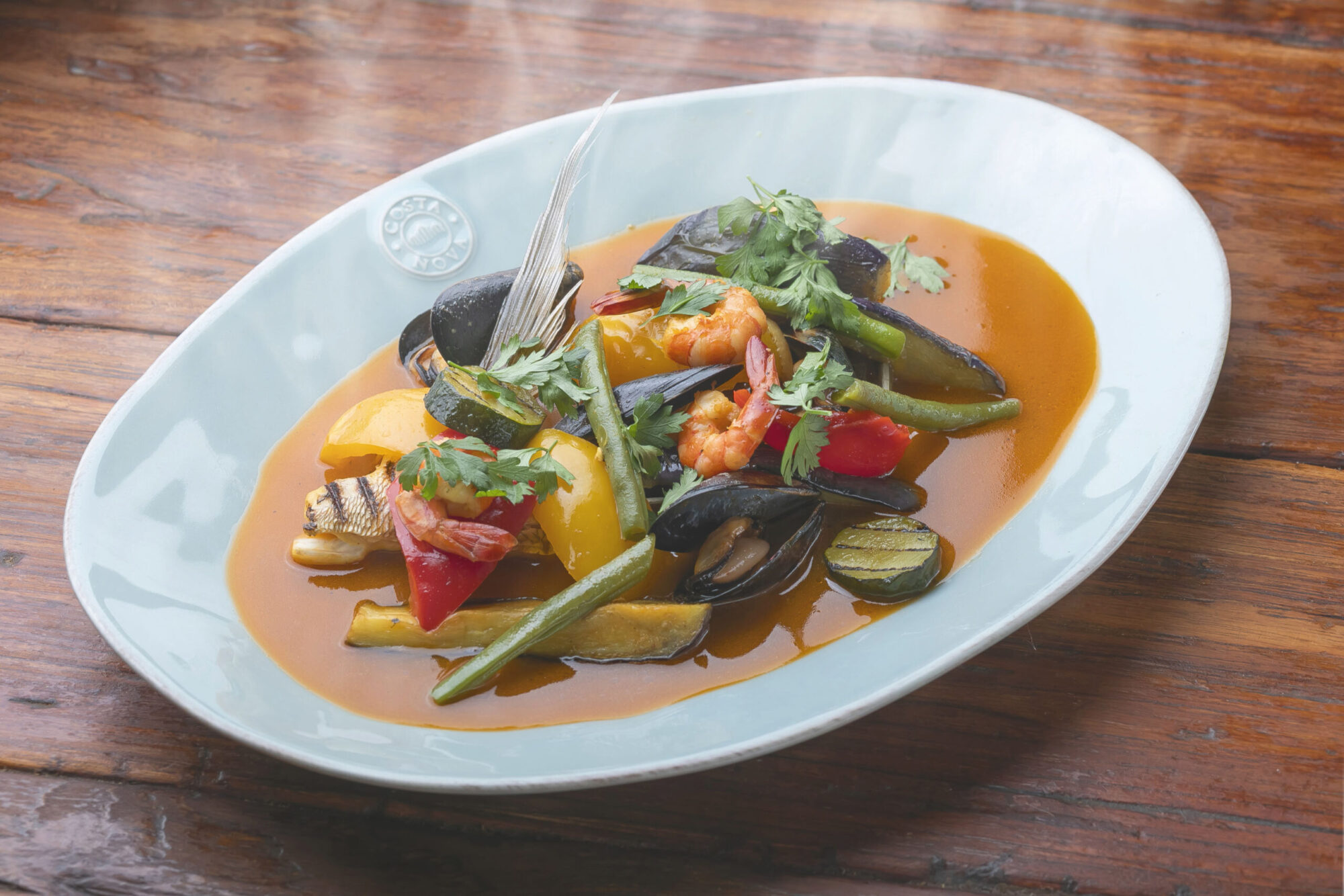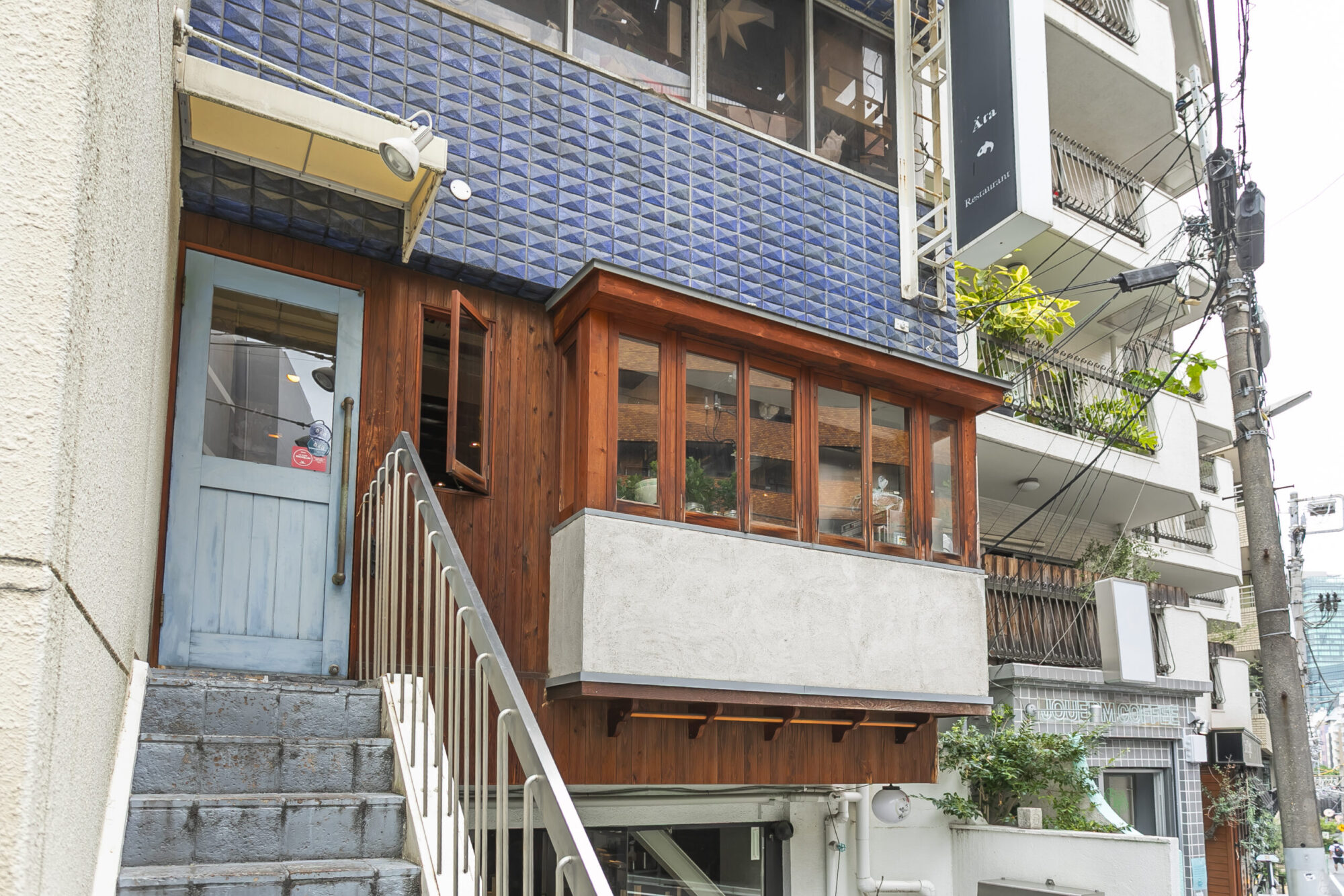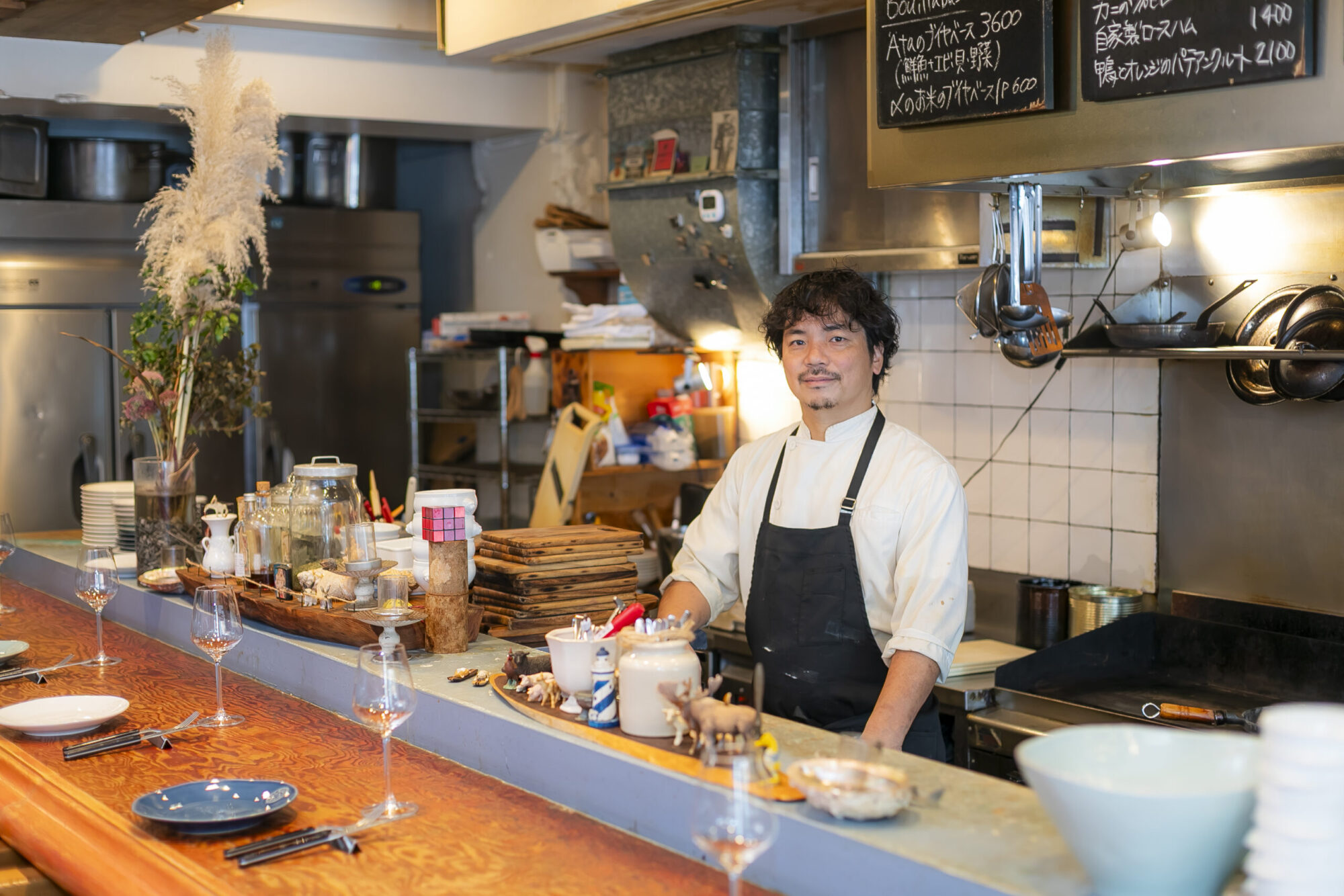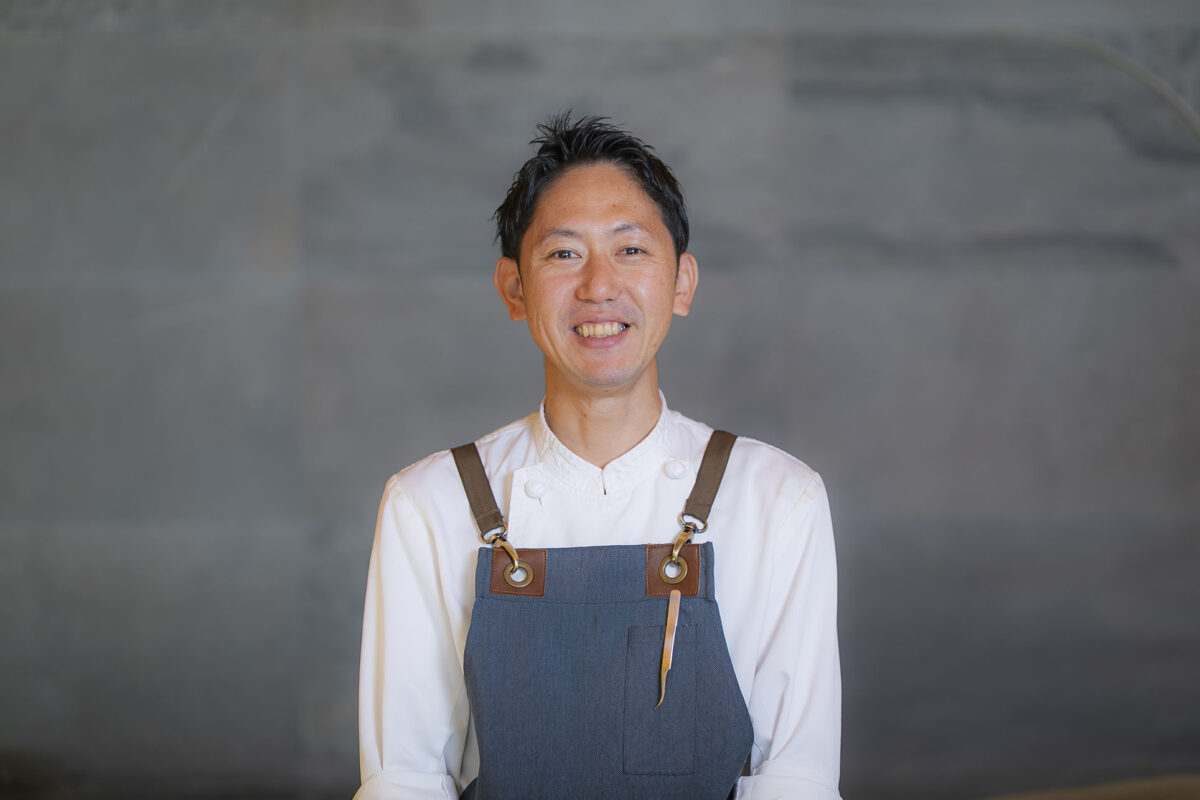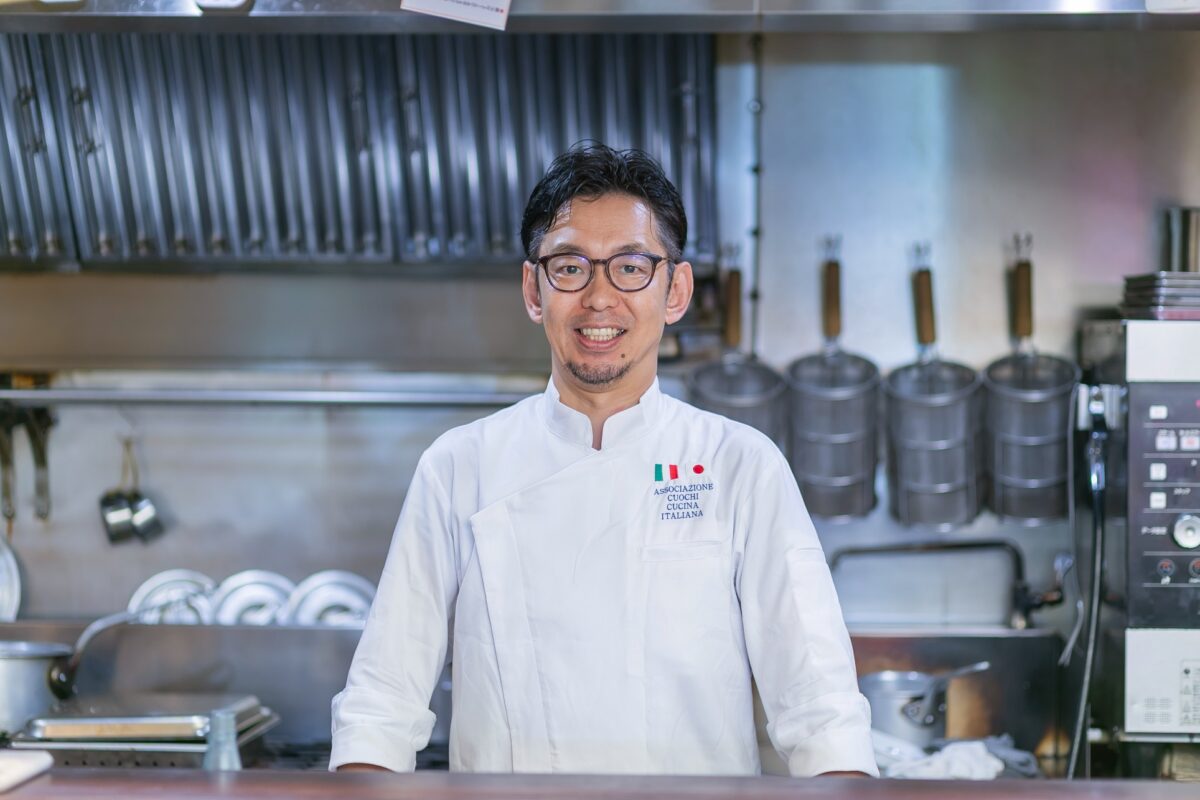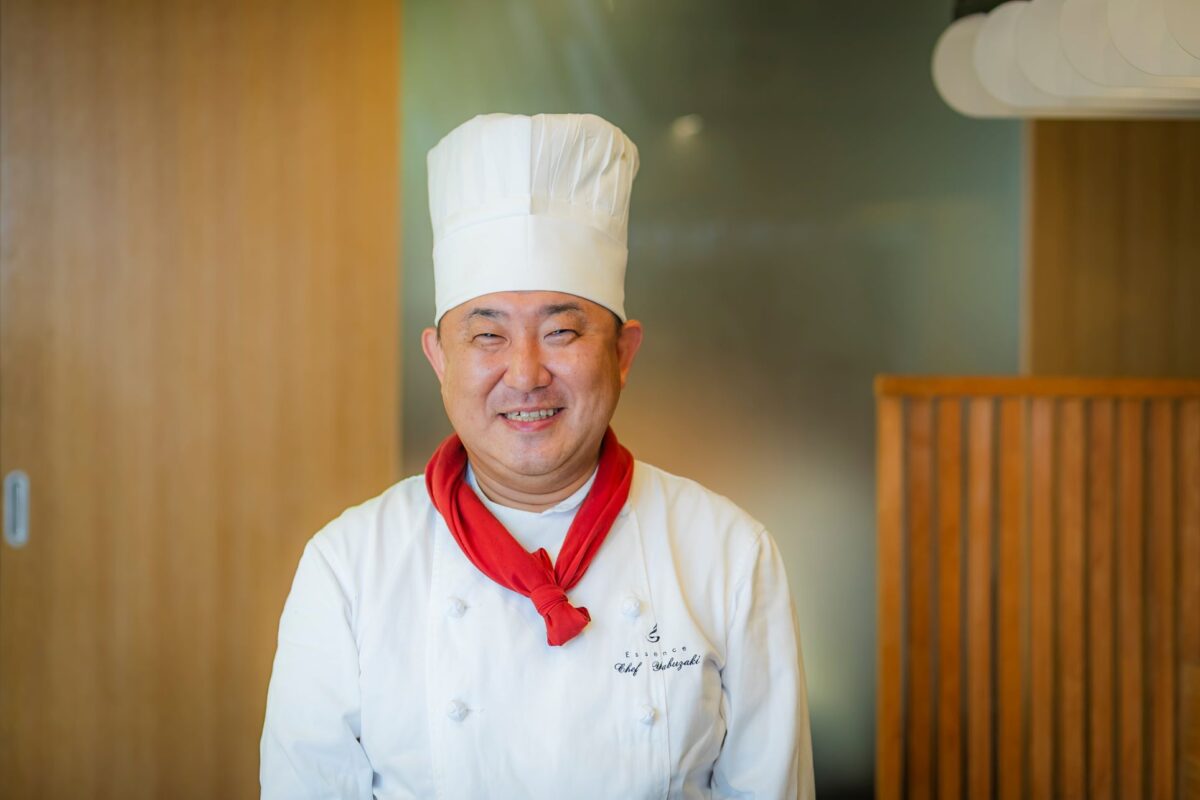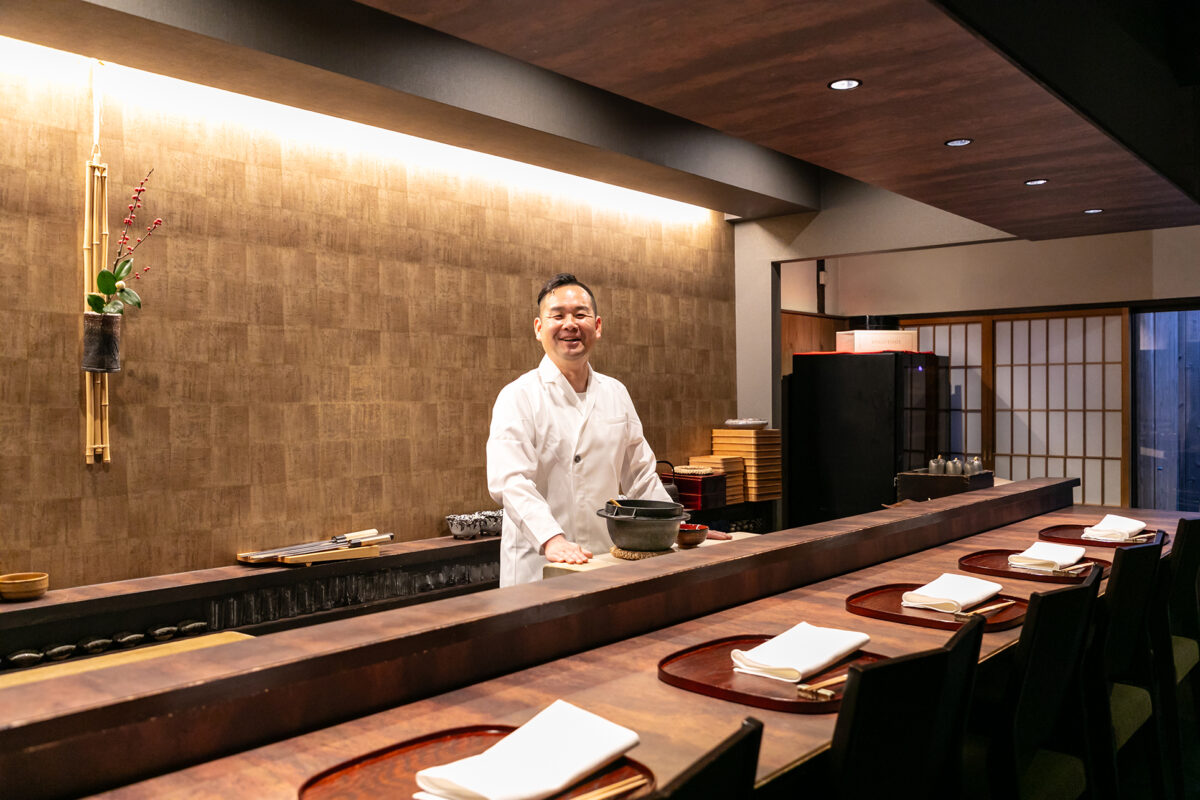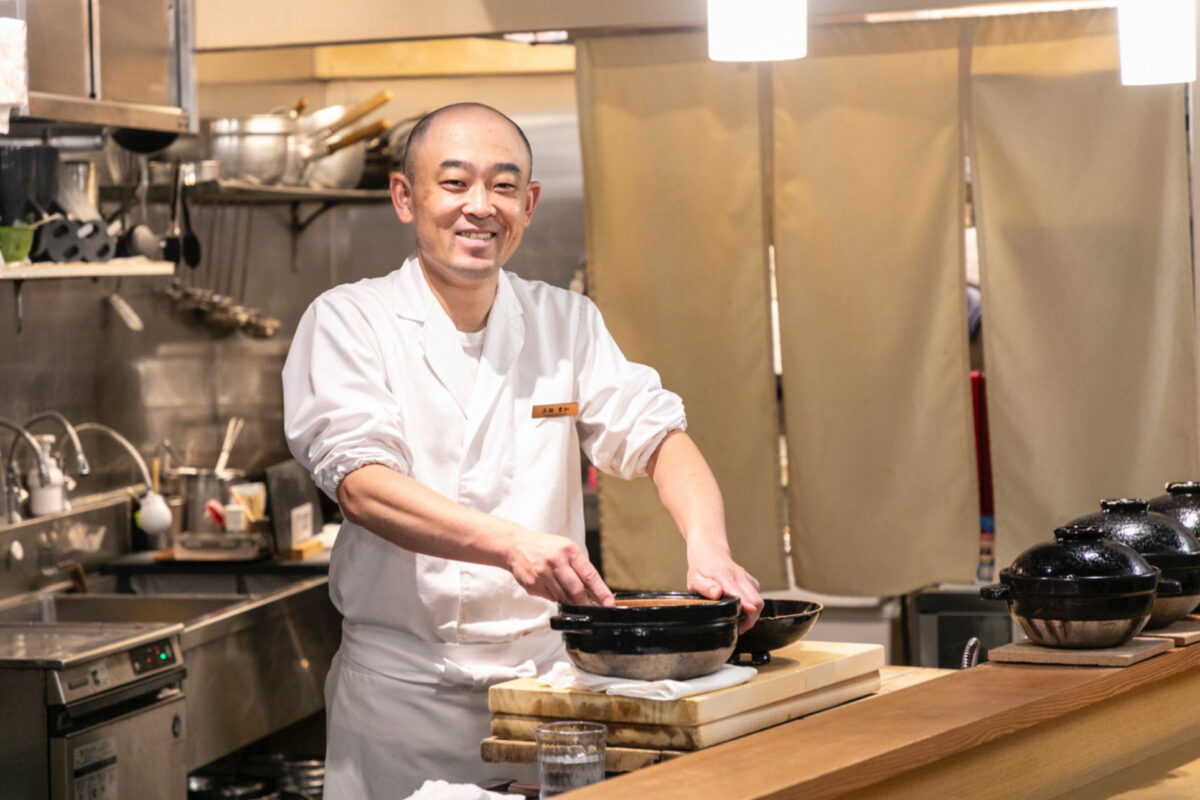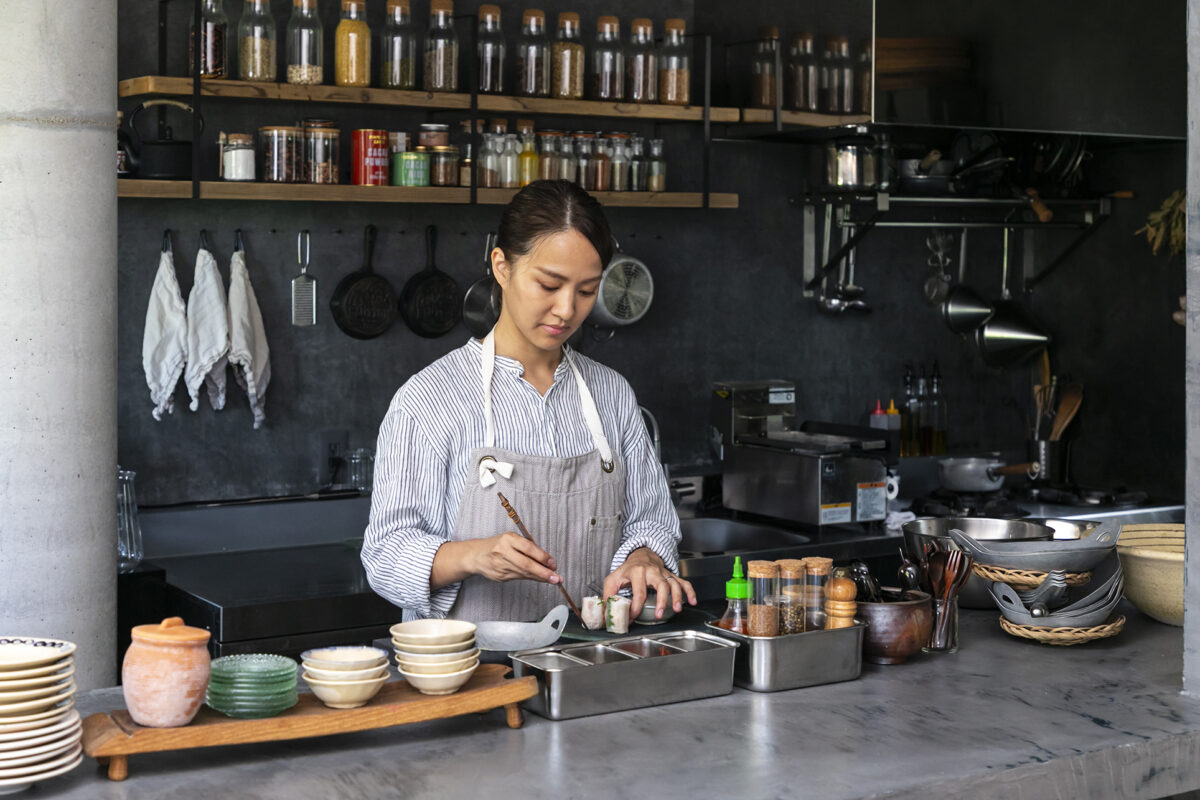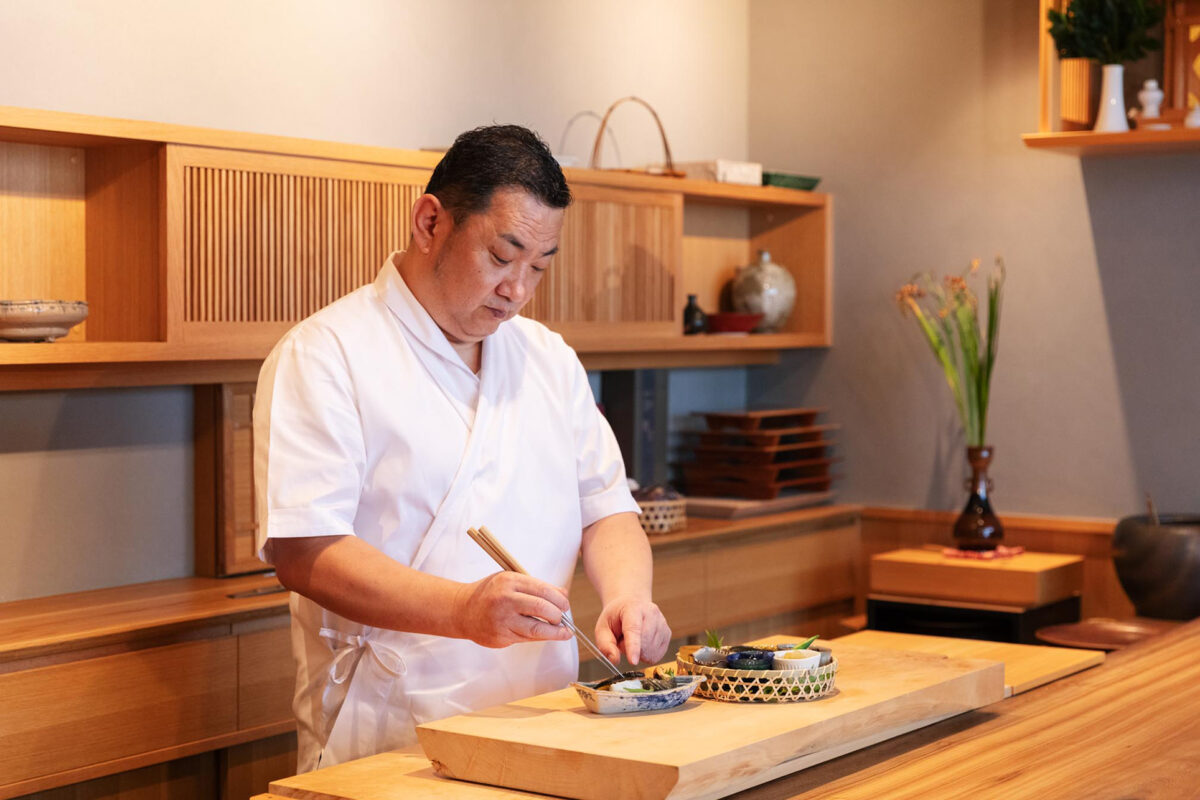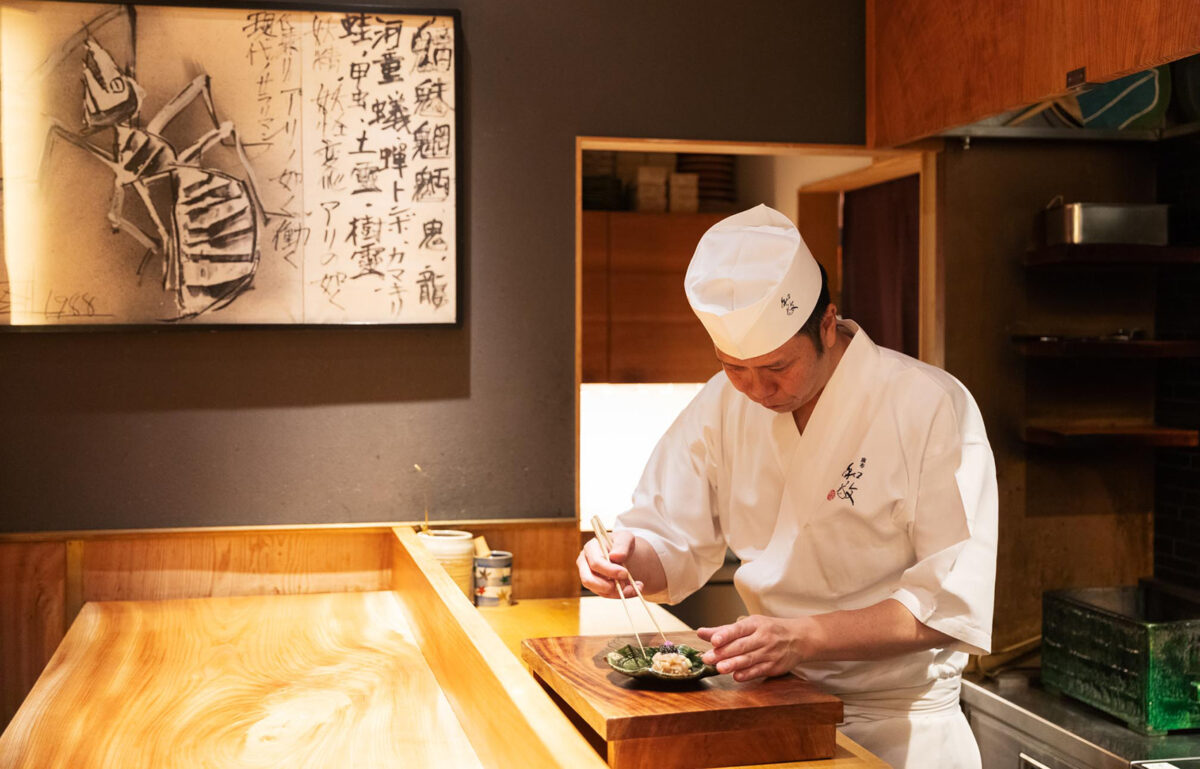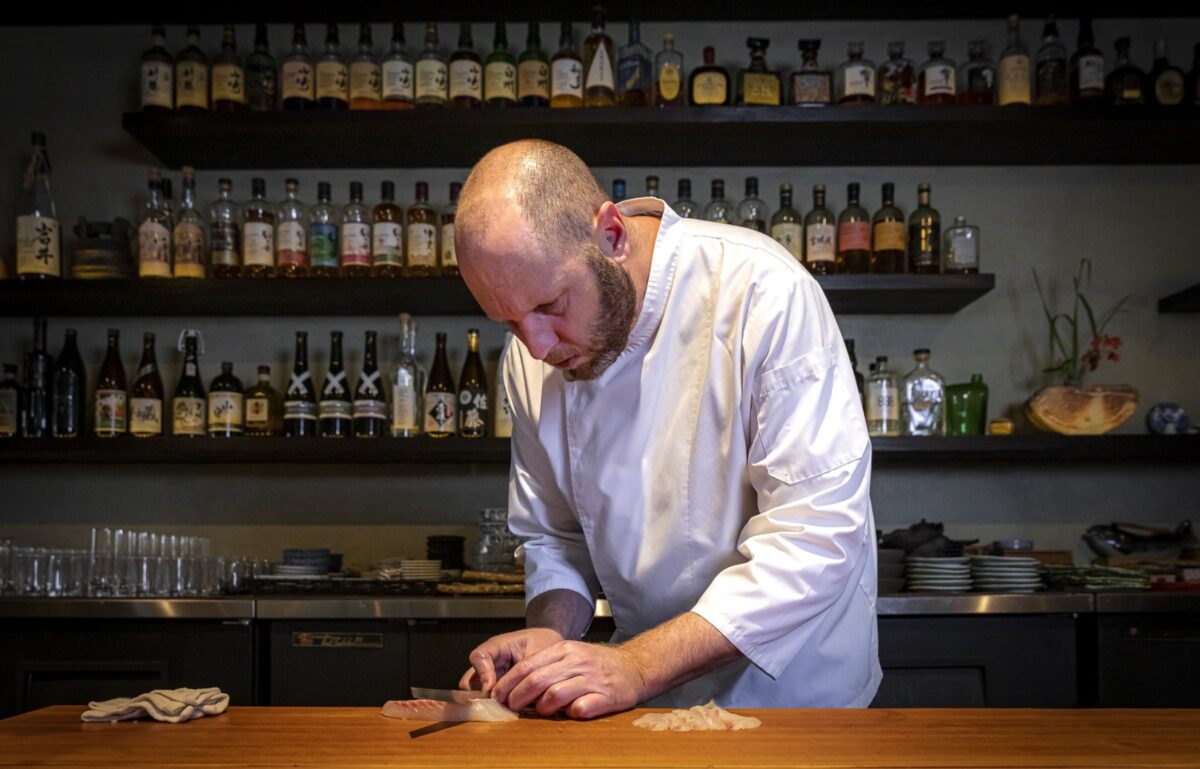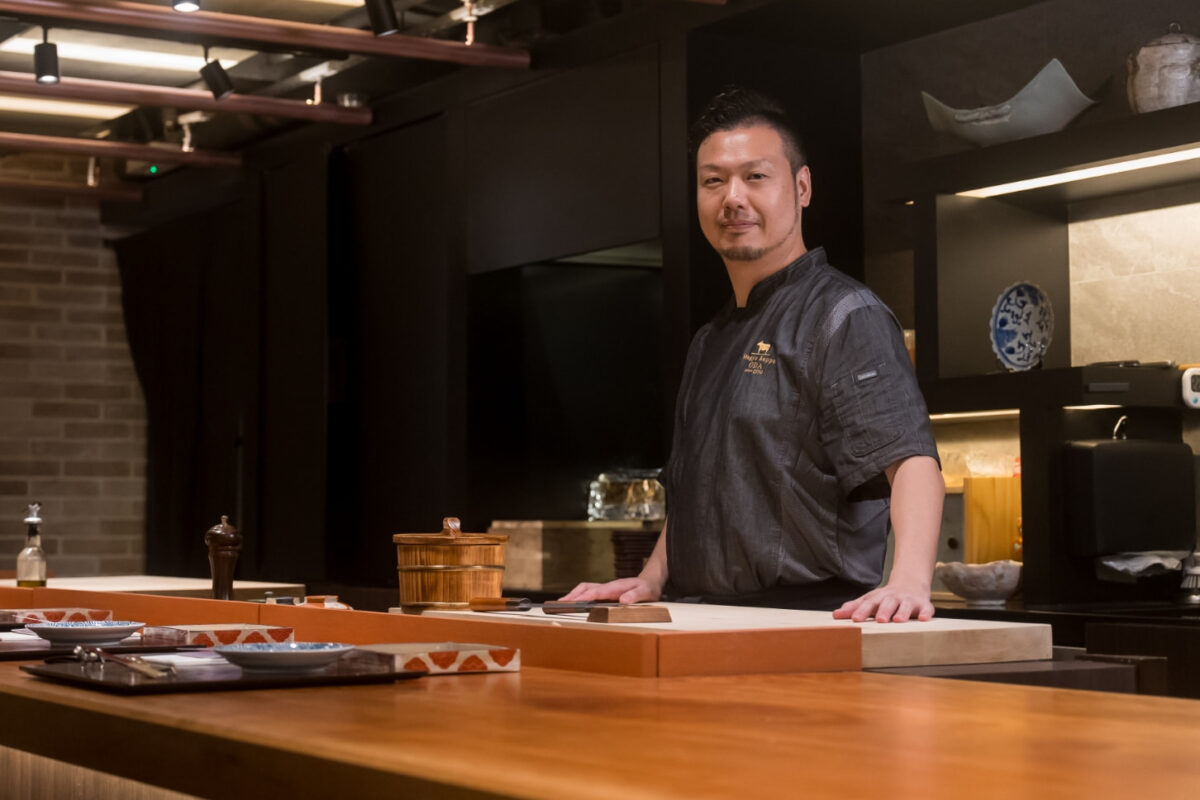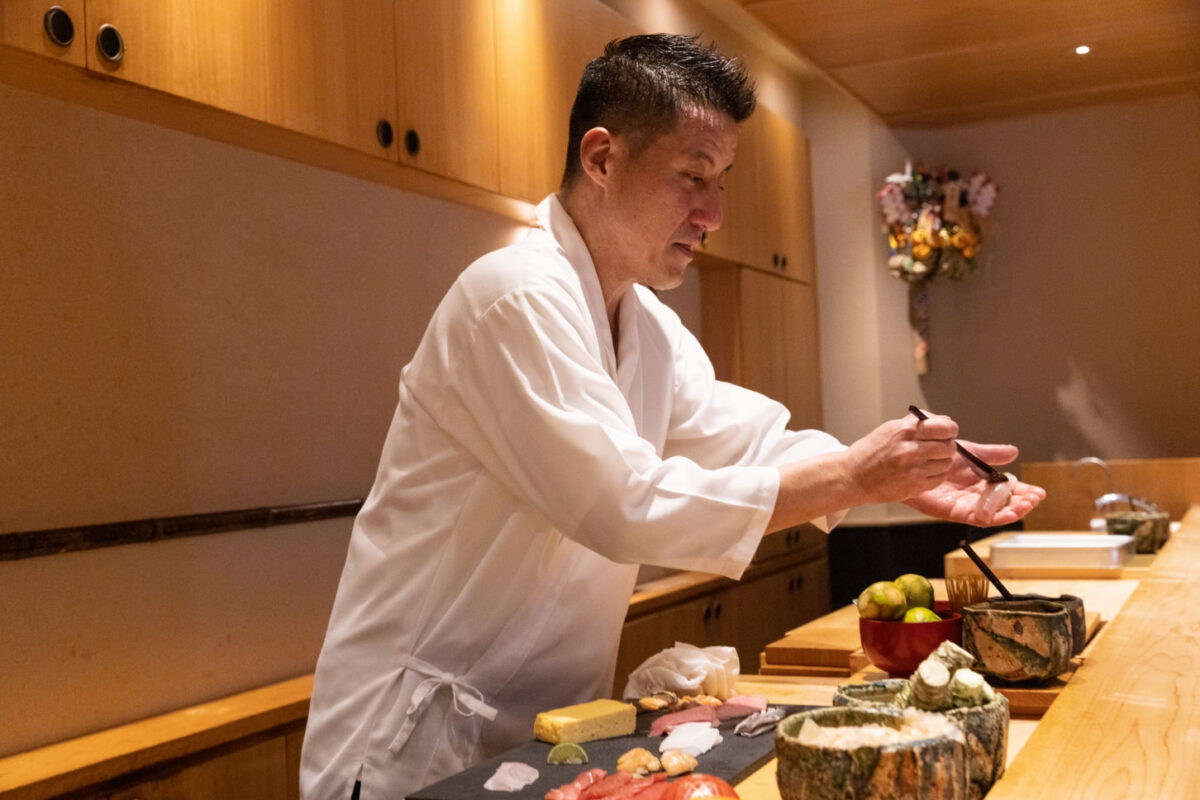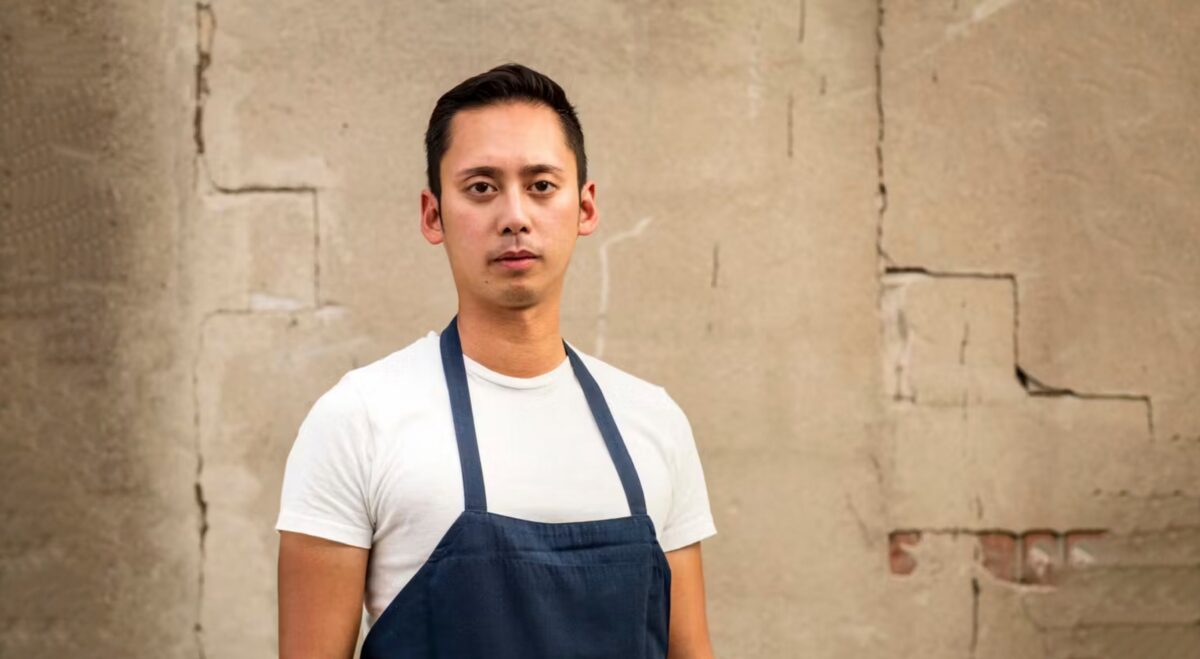Unpretentious French cuisine eaten with your hands
Conveying the origins of cuisine and essence of ingredients in new ways
Ata serves mostly fish cuisine prepared using French culinary techniques. Based on the concept of eating French cuisine with your hands, it aims to provide a space where diners can casually eat seafood served intact with shells and bones using their hands and enjoy the very act of eating.
Owner-chef Satoshi Kakegawa is a pioneer who was one of the first to offer counter-style French cuisine, where customers can enjoy meals made right in front of them. When you enter the bistro with its friendly atmosphere that is reminiscent of a European port town restaurant, your eyes go immediately to the counter seats that impart a strong live performance vibe. Whether dining alone, as a couple, with friends, or for business entertainment, guests enjoy watching the chefs prepare the dishes and chatting with them across the counter.
At the back of the bistro, there are also tables made of warm and inviting wood. Known for providing delicious and filling meals in a relaxing space, Ata is so popular that it is fully booked even on weekdays. It stays open until 2 a.m., so many customers appreciate having somewhere to go when they want to eat delicious food late at night.
Kakegawa values “respecting the producers and highlighting the intrinsic qualities of the ingredients.” He is committed to putting a “blended creativity” concept into practice, valuing the meeting of ingredients and pairing them in the best way possible. Even if the menu is the same, it is never complete, and Kakegawa is always creating new dishes.
Above all, Kakegawa is the most particular about Japan Rice. He feels so strongly about it that he has reached the conclusion that “white rice is the main dish and should be savored without alteration.”
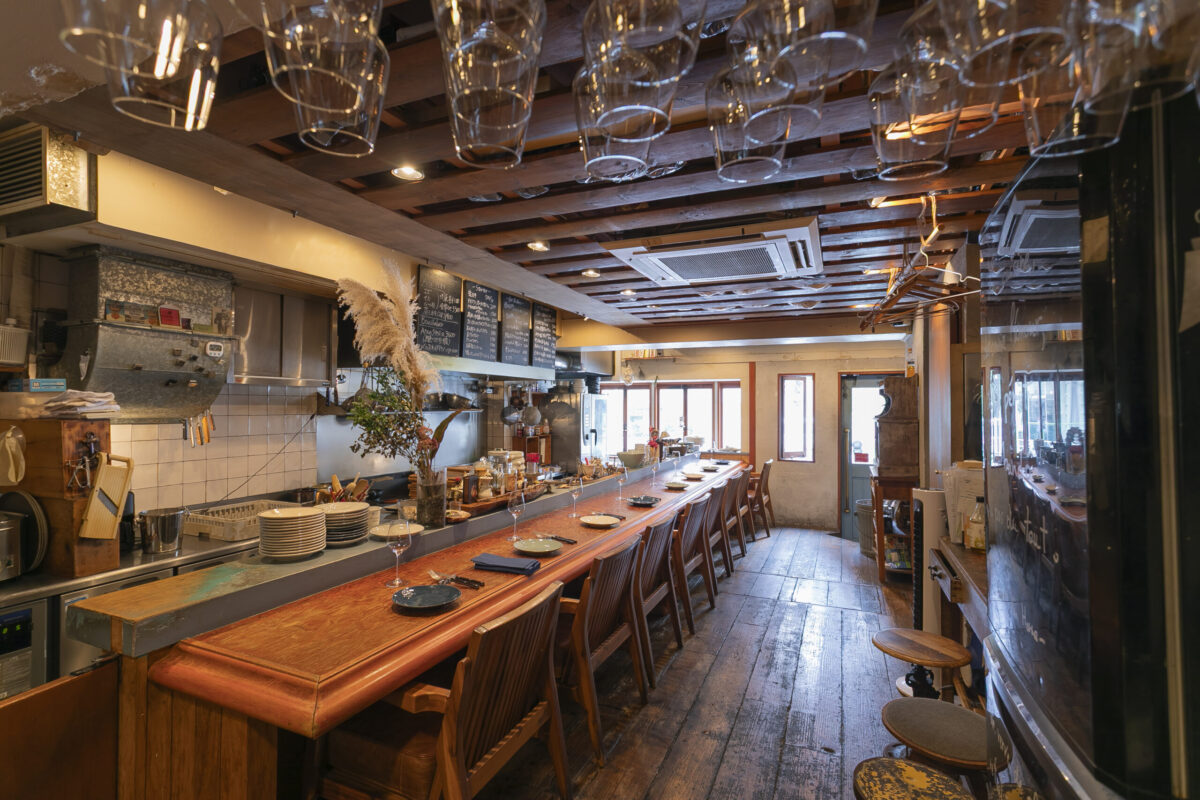
My inspiration to become a chef came from the formative experience of feeding my friends delicious food.
I was in elementary school when I started cooking. At the time, my mother had just opened a winery and was very busy every day, so our meals were mostly pre-made. My older brother once fed me a ham and lettuce sandwich on French bread, and I thought, “This is the most delicious thing ever!” After that, my brothers and I started cooking together and gradually improved our skills.
When I was in junior high school, my school friends would all come to my house, and when they said they were hungry, I would make them things like soup. Seeing their excited faces around the stove waiting to eat something delicious made me so happy. I think that formative experience of enjoying the delight of serving food was what inspired me to become a chef.
After graduating from high school, I enrolled in culinary school. The reason I chose the French cuisine path was purely because I thought it was cool. Western-style food was more familiar to me, and I simply thought French is top tier for Western food.
Unfortunately, I did not get hired at fancy restaurants and worked at cafés and employee cafeterias for companies. However, my desire to become a French chef remained unchanged, and I was introduced to Apicius, a long-established French restaurant, through word of mouth and started training there.
Six years later, I got the chance to work at Auberge Au Mirador. I stayed in a dormitory and learned culinary techniques there through friendly competition with other chefs-to-be, sharing a room and meals together.
I was then hired as a sous-chef at Les Créations de Narisawa (now NARISAWA). I saw the chef get a Michelin star and make his mark on the world, and it was very exciting.
I trained and got experience at various places. I took the long road, but I never gave up. I felt like my cooking steadily improved and I was able to move forward little by little.

My opinion changed completely after the Tohoku earthquake and tsunami.
I want to deliver happy moments of experiencing the joy and fun of eating.
Working at Daylesford Organic Aoyama changed my approach as a chef significantly. The restaurant is run by a British organic brand and I was given full authority as head chef. Two years after I started, the Tohoku earthquake and tsunami hit.
Japan is called the country of plenty, but the media was showing people facing starvation in impacted areas. I think everyone was shocked and saddened. Our restaurant, which served meals specializing in organic cuisine, was losing customers and we were throwing away food every day. Meanwhile, you saw on the news that disaster survivors were suffering from hunger. I thought, “What on earth am I doing? What is my purpose as a chef?” I felt so much pain and emptiness that I considered quitting being a chef.
It was at that moment that I was given the opportunity to work at a soup kitchen in Rikuzentakata, Iwate. There I saw the happy faces of people in a disaster-stricken area eating delicious food, and the power of food hit me and made me feel stronger. That experience reminded me that I wanted to give people joy and energy through cooking.
I think that I was a little arrogant as a chef until that point. I only thought of cooking as a form of self-expression and on how to deliver my creativity. However, eating is more about feeling joy, fun, and happiness. I strongly felt that I wanted to deliver such moments to as many people as possible. Through that experience, I opened Ata as an independent venture in 2012 with the underlying idea that “the most important thing is for our customers to have a good time.” Rather than imposing my culinary philosophy on others, I now value serving excellent food in a casual space where you can have a good time.

A chef is the connection between the producer and the customer who conveys the essence of ingredients.
Japan Rice is a delicious ingredient that should be eaten plain.
I value the idea that a chef is the connection between the producer and the customer who processes ingredients and widely conveys their essence. I have great respect for the producers and customers, and put all of my effort into serving each dish. Above all, I think it is important to accurately convey the ideas and passion of each producer to the customers, rather than focusing on my own creations.
For example, juicy tomatoes are tasty enough as they are and do not need drying or any other processing. I am grateful to them for producing those tomatoes and am always considering how to combine ingredients to highlight their delicious flavors and maximize their appeal.
I do not insist on ingredients being delivered directly from the source, and I do not seek out ingredients for my own menu ideas. While there are some things I source from different places, such as venison from Tottori and tiger puffer from Kagoshima, I do it because I think the producers’ work is amazing and I want to convey their passion. Ultimately, I am always thinking of recipes that convey the essence of the ingredients.
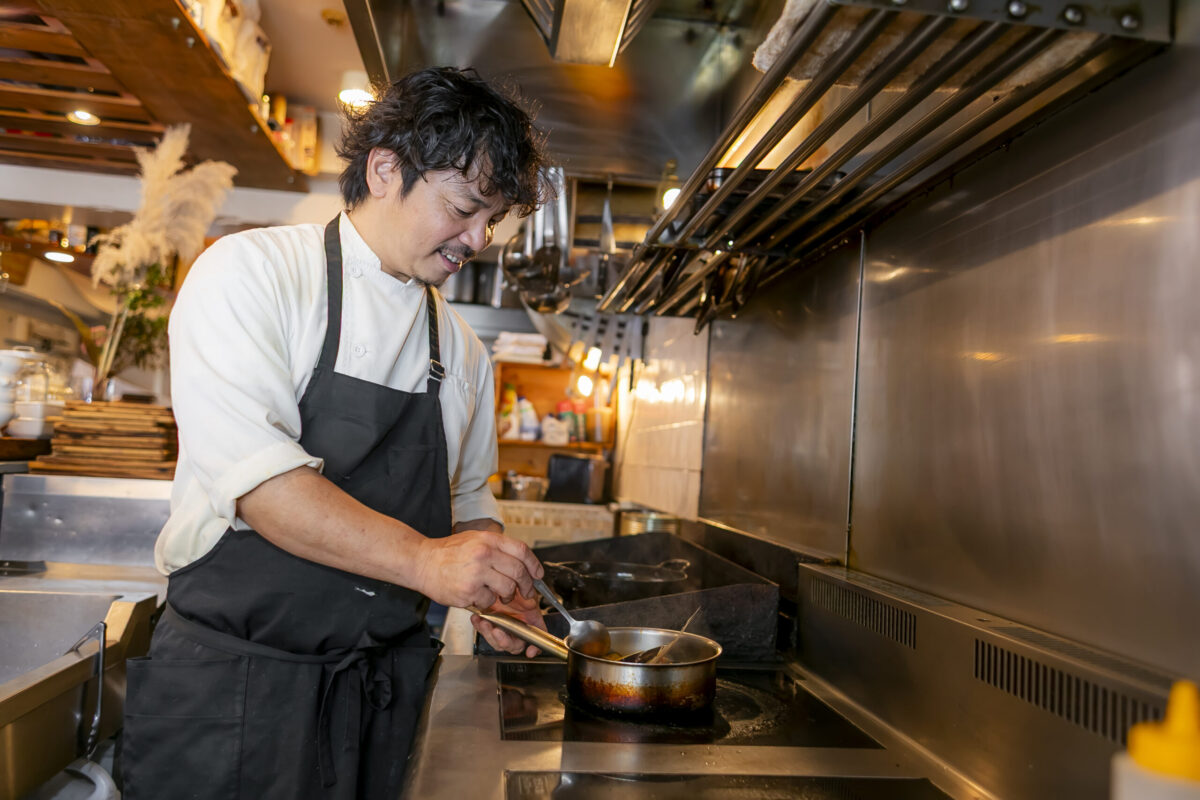
Even though I have been working as a French chef for 30 years, nothing I make can rival the deliciousness of an onigiri made with Japan Rice.
I love Japan Rice and I eat it almost every meal, three meals a day. I often visit Niigata, which is a big rice producer and is the home of the winery that my mother opened and is now run by my younger brother. I have been buying the Koshihikari rice produced by farmers I encountered there for the last 10 years.
What is great about Japan Rice is that, firstly, the aroma of the steam rising from the rice when it is done cooking is amazing. The steam you feel when you open the lid of the rice cooker and mix the rice with a rice scoop is an irreplaceable treat for me. When you eat it, it is soft and goes down smoothly, filling your mouth with sweetness and umami in a truly delightful way.
For Japanese people, rice is an exceptional ingredient. For a period of time, there was this idea spreading that carbohydrates are fattening, and so is rice, so people were avoiding rice. However, between rice and wheat, I think that rice is healthier.
Rice is also an ingredient with a unique power. Onigiri (rice balls) that are made by just pressing cooked rice together with your hands are loved everywhere and are very popular now around the world.
There are many varieties of rice grown in Japan, and their different textures and flavor qualities are also interesting, but that is not all. Uonuma in Niigata has many onigiri shops, and I was surprised when comparing them that the taste of the rice changes completely depending on how it is cooked and pressed.
I have been working as a French chef for three decades, but I feel like I cannot compete with the deliciousness of onigiri made by simply pressing rice together. The power of Japan Rice is immense. As a chef who continues to hone my skills every day to create delicious food, there are times when I feel envious and jealous.
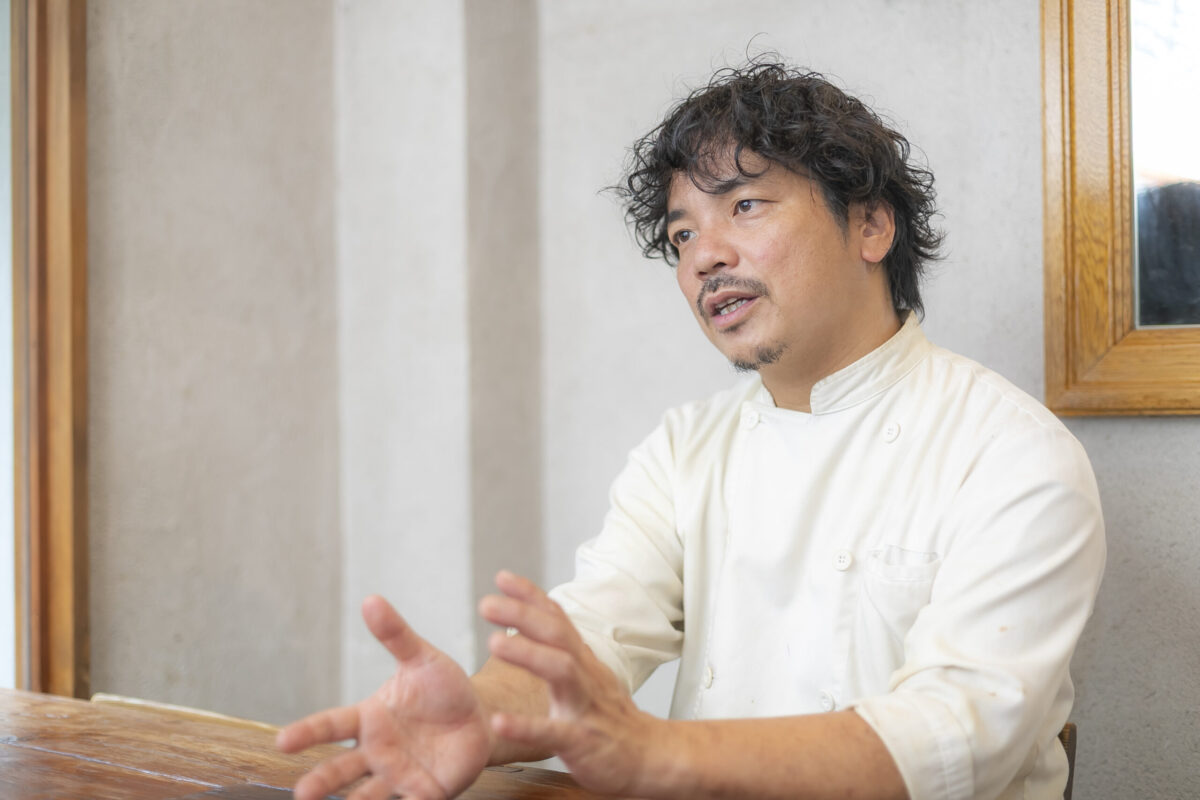
If you want to savor Japan Rice, enjoy it from the moment you open the lid.
If you want to savor Japan Rice, enjoy it from the moment you open the lid. The moment of stirring the glistening, freshly cooked rice with a rice scoop while savoring the aroma of rising steam is absolutely luxurious. It is similar to the special feeling you get when taking the first step out onto fresh snow without a single footprint in it.
My main rule when cooking rice is only cooking up to three cups of rice at a time. If you cook more than three cups, the aroma will not fill the pot properly. I also prefer soft rice, so I cook it with a little extra water. I use enough water for 3.5 cups to cook three cups of rice.
Japan Rice is delicious enough without absorbing water, but the amount of water you use is important. Conversely, even those who are impatient or hate doing troublesome tasks can eat delicious Japan Rice as long as they pay attention to how much water they use. Of course, everyone has their own desired level of rice softness, and I think it is fun to try different amounts of water to find the texture you like best.
You have to process wheat to eat pasta or bread, but you can just cook Japan Rice as it is and it is delicious. You can enjoy it in a rice bowl, but I recommend savoring it as a simple onigiri. I would love for as many people as possible to know how great Japan Rice is.
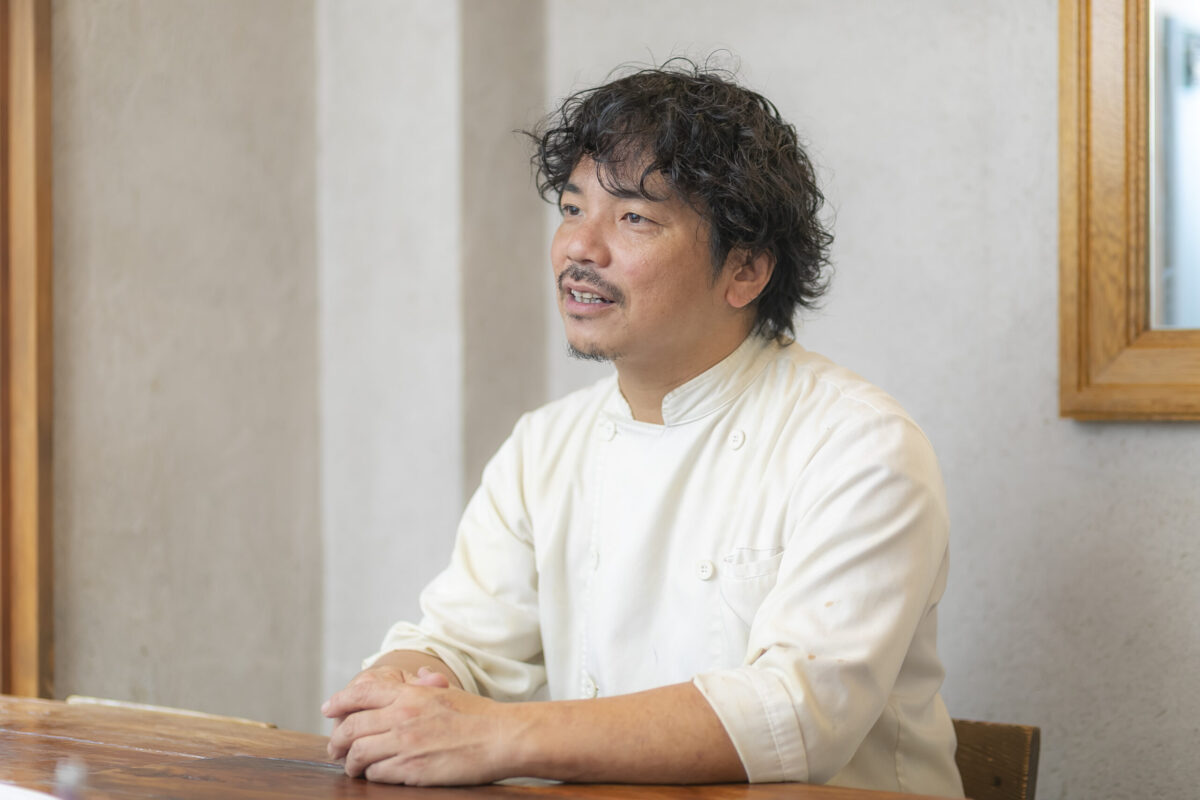
Recommended dish
Ata Bouillabaisse Ataのブイヤベース
A popular dish that all Ata customers order. A rich broth is prepared using a generous amount of red sea bream bones procured that day from discerning wholesalers, and herbal water made from boiling a unique blend of herbs is used to grill the red sea bream meat and bring out its umami flavor. Each ingredient is cooked to its best texture, creating seasonal vegetables that melt in your mouth and mussels that are plump and tender. This masterpiece lets you enjoy exquisite textures together with the rich flavor of red sea bream and herbs.
